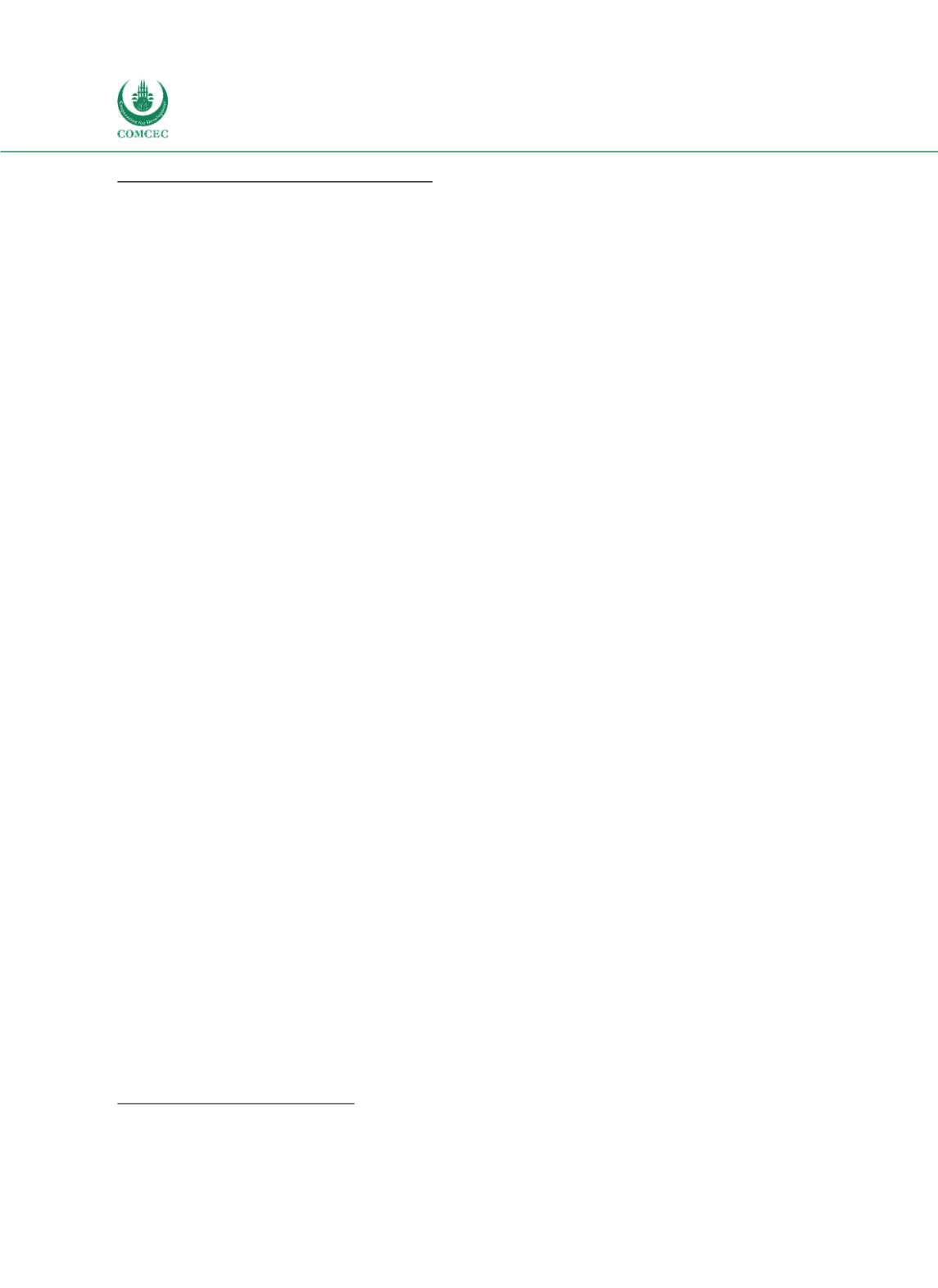

Improving Public Debt Management
In the OIC Member Countries
74
Borrowing and Related Financial Activities
Operations (incl. Islamic finance)
Gambia issues TBills and TBonds. TBills are available with maturities of 91, 182 and 364
days, while there are three maturities for TBonds (3, 10 and 30 years) (AFMI 2016). All TBills
and TBonds can be purchased by foreign investors, as long as they fulfill the general rules
concerning foreign investment (AFMI 2016).
Islamic finance is still at an early stage of development in subSaharan Africa. The share of
Islamic banks is still small, and Islamic capital markets are virtually nonexistent. Small
sukuk
issuances however took place in Gambia (Gelbard et al. 2014).
Sukuk-al-salaam
(SAS) bills,
which have a maturity of 91 days (AFMI 2016), constituted 2.96% of the total domestic debt
stock in 2013 and were first issued in November 2007. The notional asset, on which the
financial transactions of SAS bills are based in Gambia, is gold. The CBG is thus empowered to
sell gold and issue SAS bills on a book entry system. The title is surrendered back to CBG at
maturity in exchange of cost plus markup (World Bank 2010). The minimum investment is
GMD 25000 (about $595) (AFMI 2016).
Domestic debt market
The share of domestic debt has remained relatively stable since 2007 being slightly lower than
the share of external debt (see Figure 41). Domestic debt constituted about 50% of the total
public debt in 2014 (MoFEA 2014). Gambia uses a relative high portion of external funding
because of the relatively low developed domestic debt market and a policy aiming to minimize
crowdingout of private sector investment.
Few commercial banks dominate the domestic debt market. About 47% of total domestic debt
in 2014 is held by commercial banks, 37.3% by the central bank and 15.8% by nonbanks
(MoFEA 2014). Domestic public debt comprises of 81% marketable and 19% nonmarketable
instruments (MoFEA 2014). TBills constitute 78% of the domestic debt portfolio (MoFEA
2014). The increasing TBill holdings of the central bank reflect that the central bank is
financing the government deficit, which could increase pressure on inflation.
Foreign borrowing
The external debt portfolio is characterized by loans borrowed on concessional and semiconcessional terms, as Gambia has not contracted debt from commercial creditors. Multilateral
creditors account for almost 70% of the external debt stock, while bilateral creditors account
for 30% (MoFEA 2014). The major multilateral creditors are the Islamic Development Bank
(IDB) and the International Development Association (IDA). The largest bilateral creditors are
China, Venezuela, India EXIM Bank and the Kuwait Fund for Arab Economic Development.
External debt is mainly used to finance projects and programs of the energy, transportation
and agriculture sector.
The external debt portfolio is composed of 46.8% of U.S. Dollars, 3.9% of SDRs, 3.8% of Euros,
and 45.5% of other currencies in 2014 (see Figure 41).
14
As a result of the depreciation of the
dalasi against all major trading currencies, the share of external public debt in local currency
has increased (MoFEA 2014). The average time to maturity (ATM) of the external debt
portfolio is 11.1 years, whereas that of the domestic debt portfolio is 2.6 years (see also Table
14
Values taken from the World Bank. The MTDS describes the following currency composition in 2014: 56% U.S. Dollars,
22% Euros, 6% Pound sterling, 6% Japanese Yen, 5% Kuwait Dinars, 3% Saudi Riyals and 2% UAE Dirham.
















